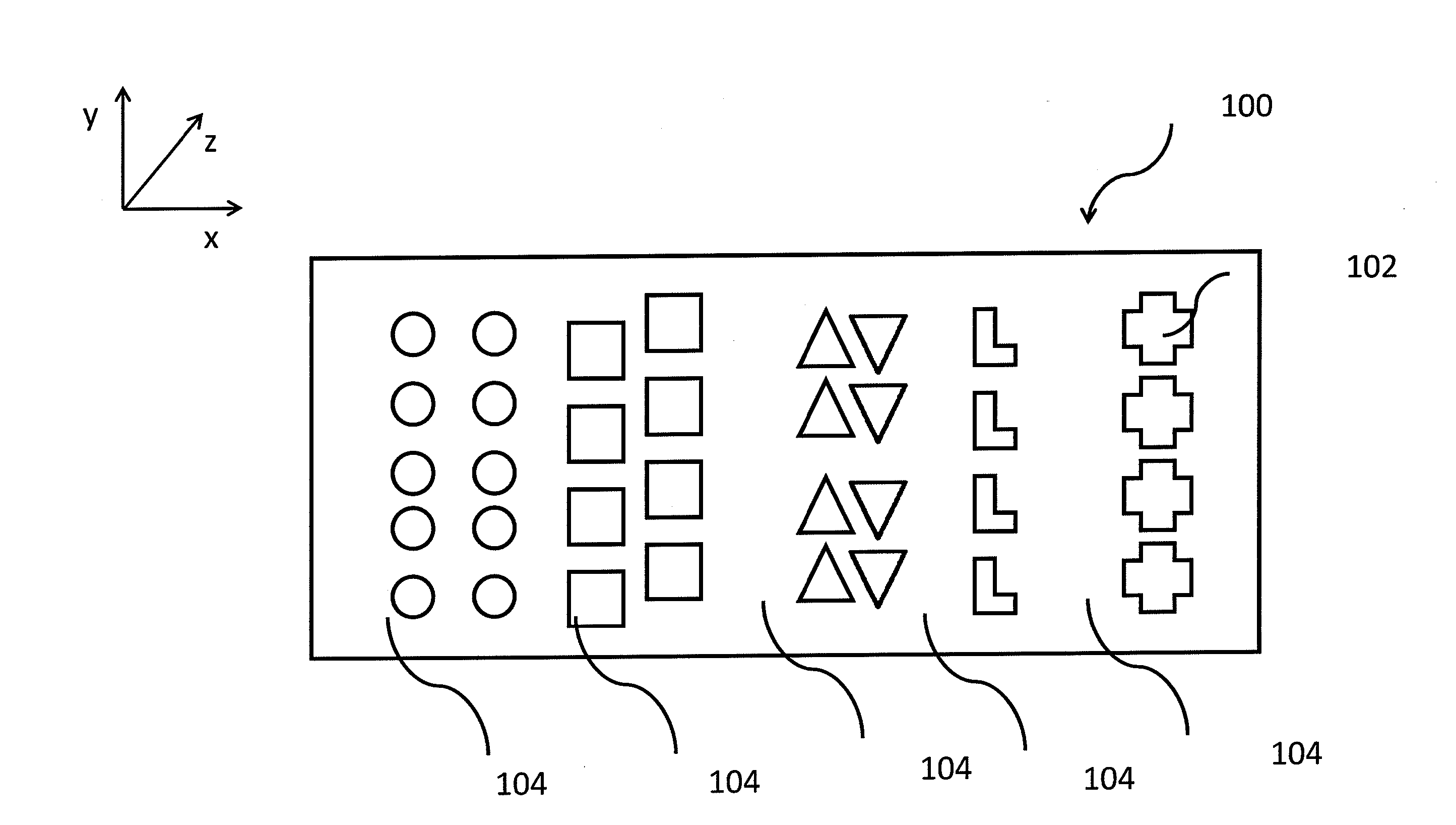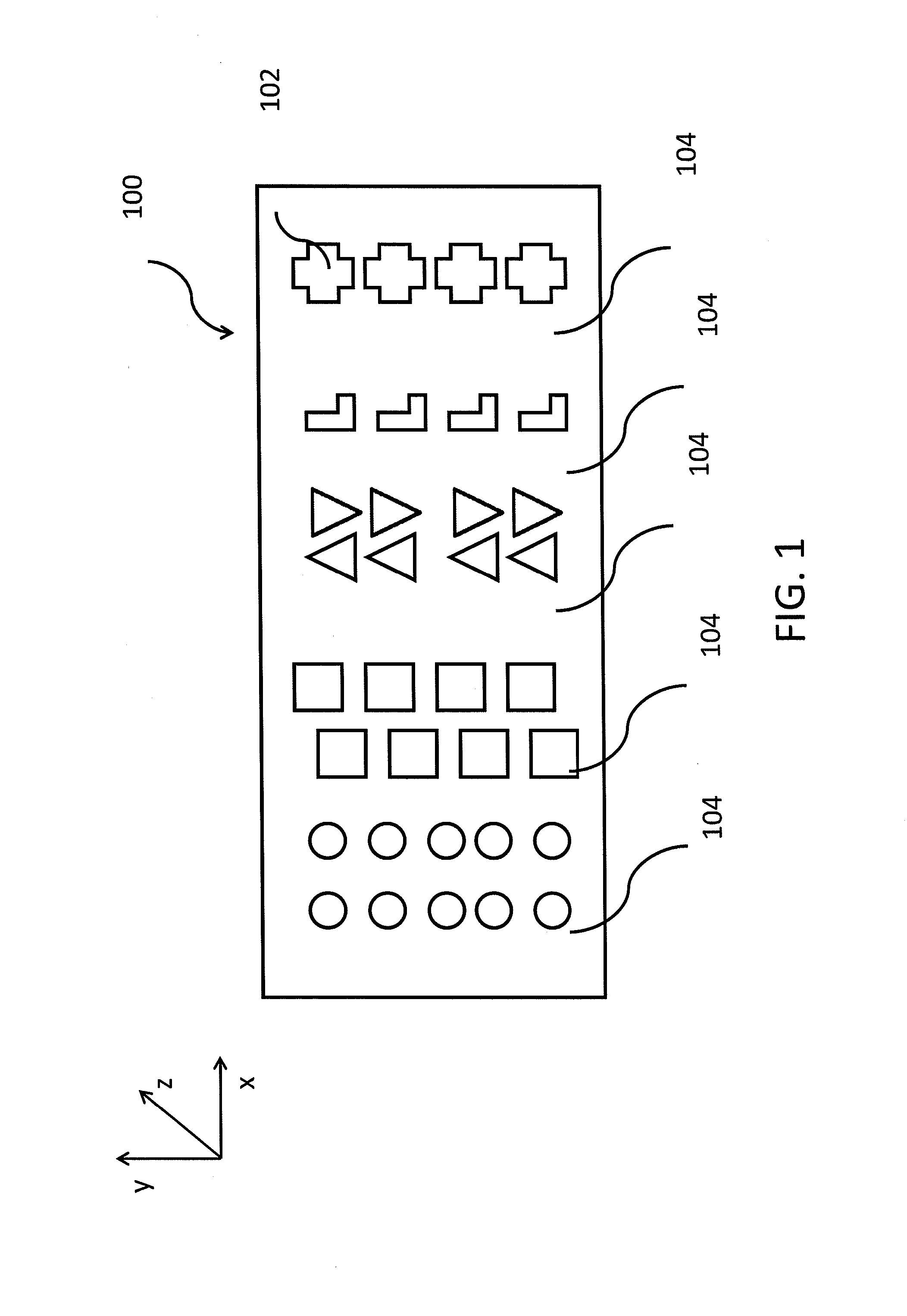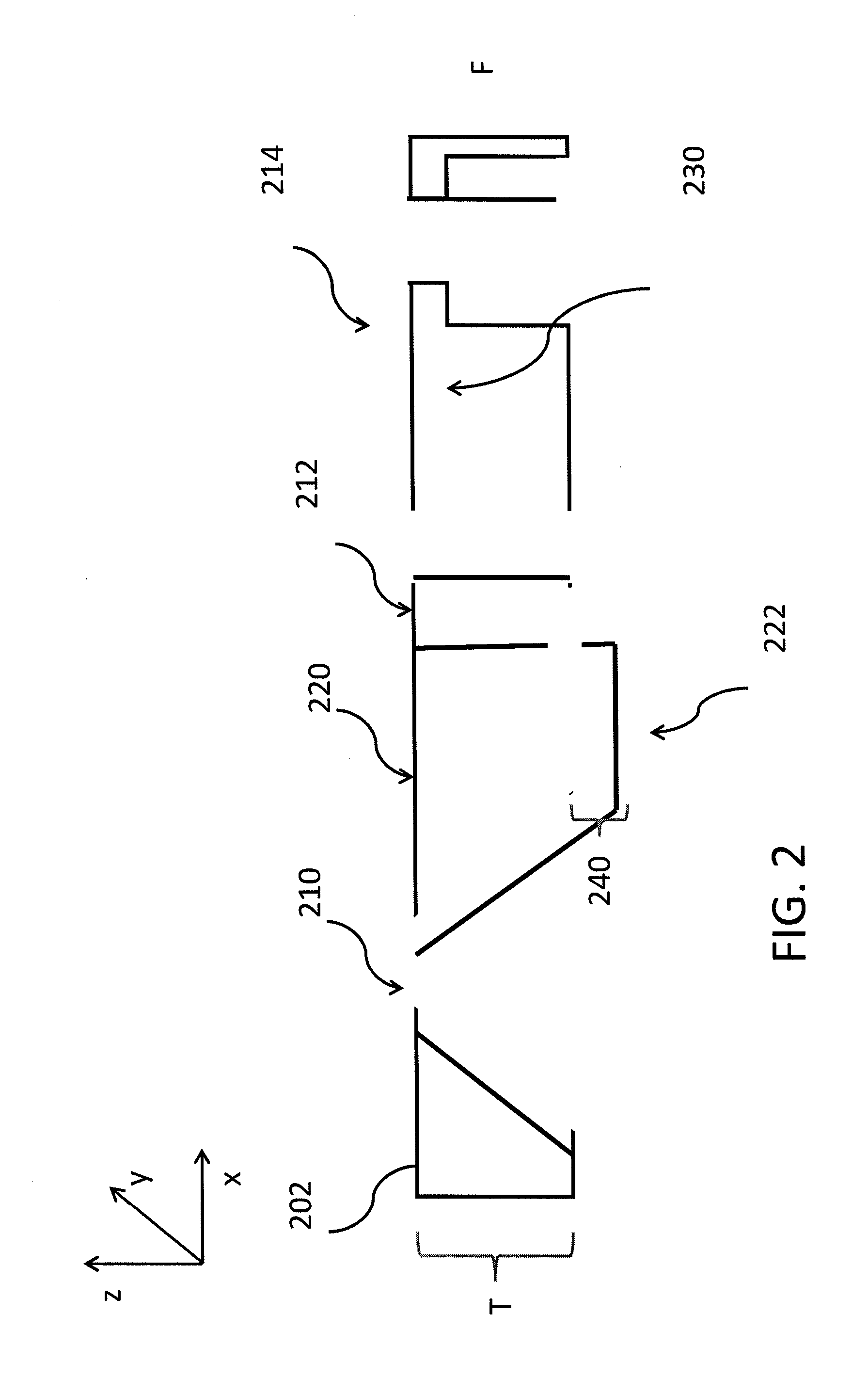High fidelity through hole film, and associated method
- Summary
- Abstract
- Description
- Claims
- Application Information
AI Technical Summary
Benefits of technology
Problems solved by technology
Method used
Image
Examples
example 1
[0069]An SU-8 photo-resist (PR) master with 110 um (length) by 110 um (width) by 50 um (height) features were used to make Fluorocur® (FCR) through membranes. A 50% solution of FLUOROCUR® (Liquidia Technologies, Inc., Durham, N.C.) resin with 0.1% 2,2-diethoxyacetophenone (DEAP) as photo-initiator in solkane (1,1,1,3,3-pentafluorobutane) was spin coated onto the PR master at 500 rpm for 1 min. The concentration of the solution and spin rate were controlled so that the resulting FCR layer is lower than the feature height of the PR master. Solkane evaporated during spin-coating. The thin layer of FCR on PR master was cured by 365 nm UV light for 2 min without nitrogen flow followed by 3 min with nitrogen purge. To help release the cured FCR through-hole membrane, a layer of norland optical adhesive (NOA) was laminated between the FCR membrane and PET substrate. After curing NOA74 by exposing to 365 nm UV for 4 min with nitrogen purge, the FCR through-hole membrane was removed from the...
example 2
[0070]A photo-resist (PR) master with 50 um (length) by 50 um (width) by 65 um (height) features were used to make Fluorocur® (FCR) through membranes. A 50% solution of FLUOROCUR® (Liquidia Technologies, Inc., Durham, N.C.) with 0.1% 2,2-diethoxyacetophenone (DEAP) as photo-initiator in 1,1,1,3,3-pentafluorobutane (solkane) was spin coated onto the PR master at 500 rpm for 1 min. The concentration of the solution and spin rate were controlled so that the resulting FCR layer is lower than the feature height of the PR master. Solkane evaporated during spin-coating. The thin layer of FCR on PV master was cured by 365 nm UV light for 2 min without nitrogen flow and 3 min with nitrogen purge. To help release the cured FCR through-hole membrane, a layer of norland optical adhesive (NOA) was laminated between the FCR membrane and PET substrate. After curing NOA74 by exposing to 365 nm UV light for 4 min with nitrogen purge, the FCR through-hole membrane was removed from the PR master and t...
example 3
[0071]A regular FCR mold was first prepared from the 110 um (length) by 110 um (width) by 50 um (height) SU-8 photoresist (PR) master. This FCR mold was used to make a NOA74 submaster. To do so, NOA74 was laminated between flat glass and the FCR mold and cured by 365 nm UV light for 4 minutes with nitrogen purge. The NOA74 submaster was obtained after removal of the FCR mold. This submaster was then used to make through hole membranes. A 50% solution of FLUOROCUR® (Liquidia Technologies, Inc., Durham, N.C.) with 0.1% 2,2-diethoxyacetophenone (DEAP) as photo-initiator in 1,1,1,3,3-pentafluorobutane (solkane) was spin coated onto the sub-master at 500 rpm for 1 min. The concentration of the solution and spin rate were controlled so that the resulting FCR layer is lower than the feature height of the sub-master. Solkane evaporated during spin-coating. The thin layer of FCR on PV master was cured by 365 nm UV light for 2 min without nitrogen flow and 3 min with nitrogen purge. The cured...
PUM
| Property | Measurement | Unit |
|---|---|---|
| Fraction | aaaaa | aaaaa |
| Fraction | aaaaa | aaaaa |
| Fraction | aaaaa | aaaaa |
Abstract
Description
Claims
Application Information
 Login to View More
Login to View More - R&D
- Intellectual Property
- Life Sciences
- Materials
- Tech Scout
- Unparalleled Data Quality
- Higher Quality Content
- 60% Fewer Hallucinations
Browse by: Latest US Patents, China's latest patents, Technical Efficacy Thesaurus, Application Domain, Technology Topic, Popular Technical Reports.
© 2025 PatSnap. All rights reserved.Legal|Privacy policy|Modern Slavery Act Transparency Statement|Sitemap|About US| Contact US: help@patsnap.com



